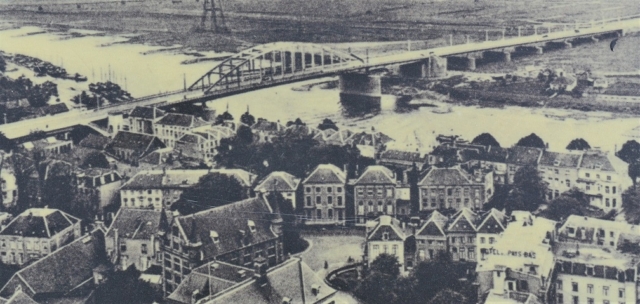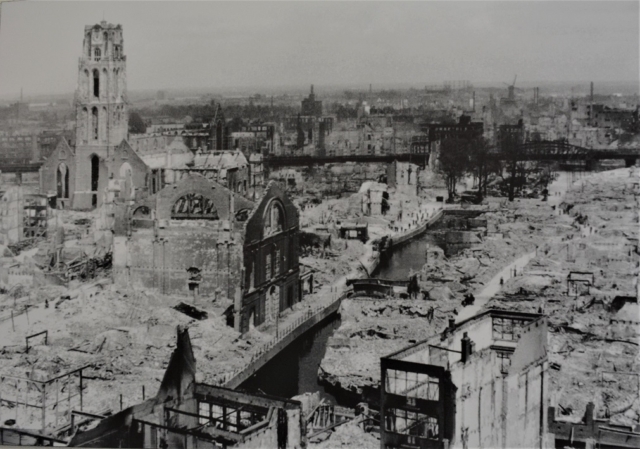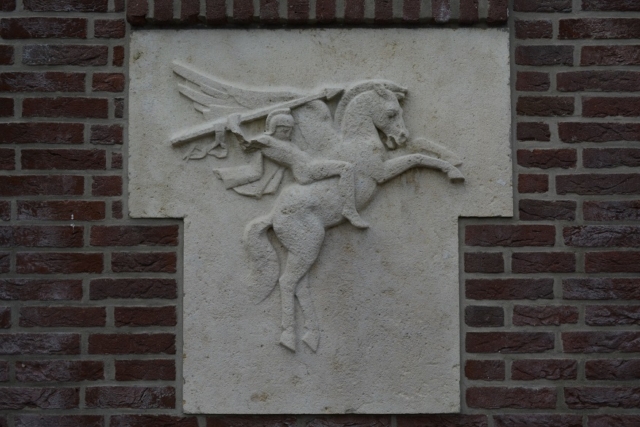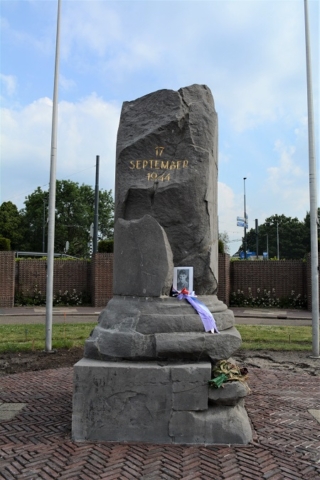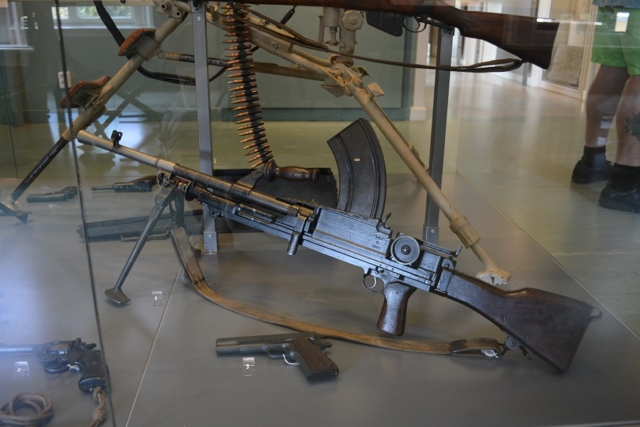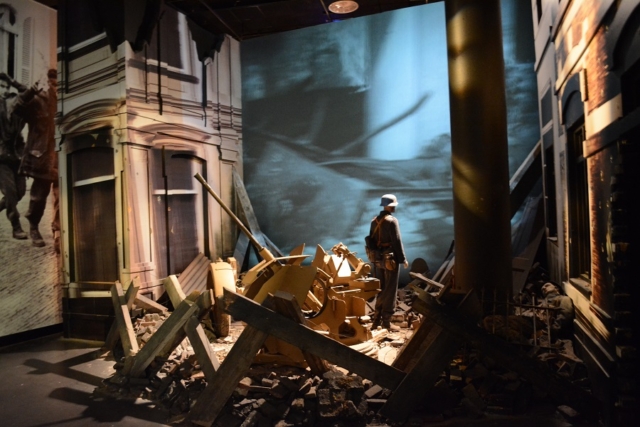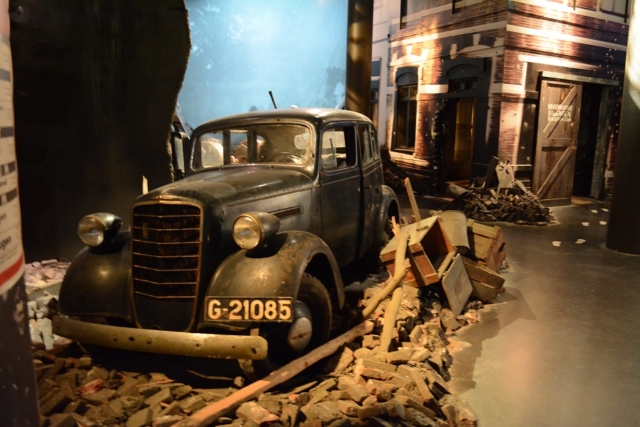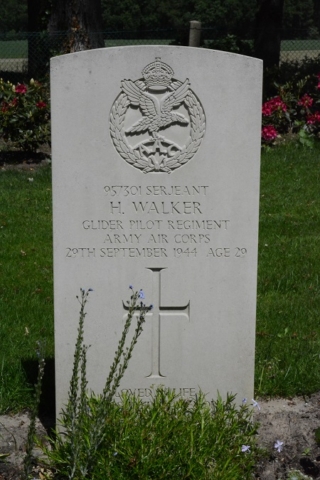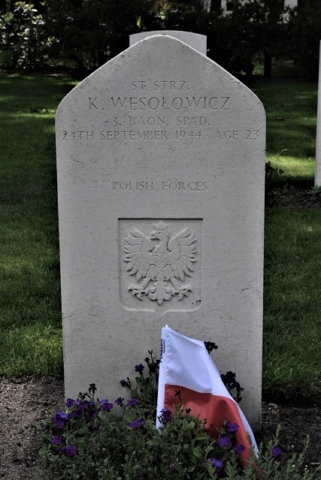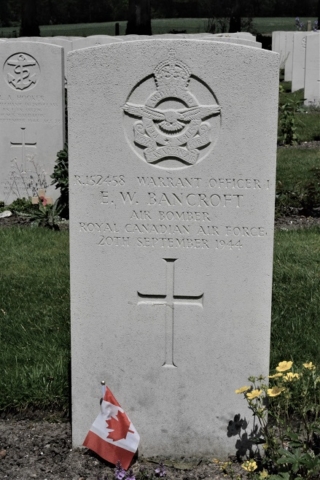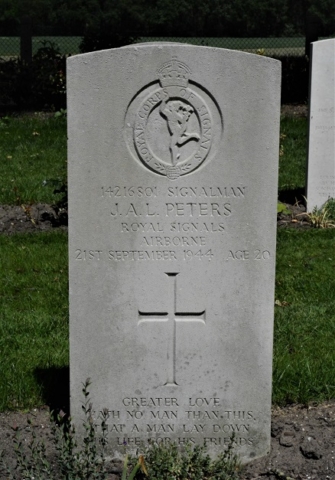Before 1945, there was a previous attempt at the Liberation of the Netherlands, using a massive Airborne invasion called Operation Market Garden. The objective was to capture the bridges between the Allied forces and the German border so that the ground forces could advance without getting bogged down at the rivers. They thought this would end the war much faster. It took place between 17 and 25 September 1944.
The Paratroopers
Operation Market Garden was a massive undertaking. The Paratroopers involved with Market (the airborne part of the invasion) were the 1st British Airborne Division, the American 82nd Airborne Division, the American 101st Airborne Division and the 1st Polish Parachute Brigade. Although no Canadian units took part, many Canadians parachuted with the British regiments. A total of 34,600 soldiers went in, although not all jumped. There were 20,011 paratroopers, and 14,589 went in with gliders. Also, 1,736 vehicles and 263 artillery pieces were dropped using both gliders and parachutes. Together they were called the First Allied Airborne Army. More than 1,500 aircraft were used, leaving from 22 different airbases in England. “Market” became the largest airborne operation in history. “Garden” was the codename for the ground forces of the 30th British Corps (three divisions of tanks and infantry).
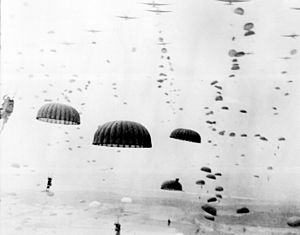
Even with 1,500 aircraft, they could not carry all the men and equipment at one time. The load consisted of 90% paratroopers and 10% equipment on the first day. On the second day, this was reversed. Every Division commander had requested that the aircraft make two trips on the first day, but due to logistical problems (such as refitting aircraft to pull gliders instead of carrying passengers, this was not possible. That was the plan, but as it turned out, bad weather caused further delays.
The 82nd Division and the Polish Brigade commanders were sceptical that the invasion would be successful but were overruled.
Many of the paratroopers landed far from their objectives. They were supposed to capture their respective bridges and hold for three or four days until the ground forces arrived. Four days is a long time for airborne forces to work without support. It ended up being nine days for the soldiers at the furthest bridge at Arnhem.
The Bridges
Eindhoven
Four small bridges were captured on the first day of Market Garden around Eindhoven on 17 September. Eindhoven was the first city in the Netherlands to be liberated but was later bombed by the Germans.
Wilhemina Canal – Son
Just north of Eindhoven is the little village of Son. Between Eindhoven and Son, there was a bridge over the Wilhemina Canal. The Germans blew up this bridge before the 101st Division could capture it. A Bailey Bridge had to be built by British Engineers. This delayed the advance of the ground forces by 12 hours. This event is documented in the movie “A Bridge Too Far”.
Grave & Heumen
About 60 km to the north of Eindhoven is the city of Grave. The bridges over the Mass-Waal Canal at Grave and nearby Heumen were captured on the first day by the American 82nd AB Div.
Wijchen
The Edith bridge at Wijchen, west of Nijmegen, was captured by the 504th regiment of the 82nd AB Div.
Waal River – Nijmegen
The 82nd Airborne Division failed to capture this bridge until help from the ground forces arrived. All the paratroopers had been dropped at the south end of the bridge. The best way to capture a bridge is to attack both ends at once. The paratroopers tried to cross the river in little canvas boats. Due to a lack of paddles, the men used their rifle butts to propel the boats. The engineers had to make five trips across the river in daylight under heavy enemy fire. 200 men perished. 30th Corps arrived at Nijmegen 36 hours behind schedule and captured the bridge. The Nijmegen and Arnhem bridges were vital to the success of Market Garden. The other bridges were over small rivers or canals that could be bridged by temporary construction of Bailey Bridges if necessary, but the Nijmegen and Arnhem bridges were over major rivers which could not be crossed without the bridge. Without the capture of these two bridges, the invasion would fail—one bridge to go. (This event is also documented in the movie “A Bridge Too Far”).
Arnhem
The capture of the Arnhem bridge was supposed to be easy. It was thought that not many German forces were in the area. But the German 9th and 10th SS Panzer Divisions had been recently moved to the area for rest and maintenance after being on the front lines for a long time.
Poor planning of Operation Market Garden showed itself at the Arnhem bridge. First of all, the troops landed too far away to reach the bridge quickly. Second, only half of their troops arrived on the first day. Half of the soldiers that did arrive on the first lift headed for the bridge, while the other half remained at the drop zone to protect it for the drop of the remainder of their men on the second day. Therefore, only one-quarter of the division advanced toward the bridge and a day was lost. Of the troops marching toward the bridge, only one-third of them arrived at the bridge on the evening of the first day, 17 September. Battles with the Germans bogged down the other two battalions.
The Second Day
On the second day, 18 September, an additional 200 men reached the bridge. This was only one-sixth of the two battalions trying to get there but could not due to German resistance. The only good news was that the remainder of the British Airborne Division landed safely, although three hours late due to bad weather. However, they landed a long way from the bridge like the previous day.
The Third Day
On the third day, the remainder of the division tried to reach the bridge but were prevented from doing so by German forces. As a result, only 600 men had reached the bridge by the end of the third day, out of a whole division. Some of the Polish Airborne forces arrived to help, but most of them were delayed in England due to bad weather.
The Fourth Day
Out of 10,000 paratroopers in the British AB Div, only 740 had managed to reach the bridge. By the fourth day, they were getting low on ammunition and food. Of that number, 81 had been killed, and there were large numbers of wounded. They then received the message that the remainder of the division could not reach them. All the remaining soldiers of the division tried to gather at Oosterbeek. The 10th battalion arrived with only 60 men left. The 156th battalion was down to 150 men. They fixed bayonets and broke through the German lines to Oosterbeek with a wild bayonet charge. Seventy-five of them made it.
The Fifth Day
By the fifth day, the remaining 3,584 (out of 10,00) soldiers of the 1st British AB Div had gathered at Oosterbeek, a small town a few kilometres west of Arnhem. Finally, the remainder of the Polish Division arrived. Two battalions landed in an area that was occupied by German forces. A third battalion was dropped 15 miles away, near Grave. Unfortunately, all of their supplies were dropped on the wrong side of the Rhine river. As a result, the Polish Brigade had lost 25% of its men.
The Ninth Day
The ground forces never made it to the Arnhem Bridge. Amazingly the small group of paratroopers held out against two Panzer Divisions for nine days before being overrun. Finally, on 25 September, the paratroopers retreated to Oosterbeek to join what was left of the division.
The Ground Forces
The British 30th Corps supplied the ground forces. They advanced on schedule on the first day, led by the tanks of the Irish Guards. However, after crossing the border from Belgium into the Netherlands, they were immediately attacked by German troops from both sides of the road.
On the first day, the tanks and infantry were supposed to cover the 21 km (13 miles) to Eindhoven, but they advanced less than half that distance. The plan was starting to unravel in the first hours of the first day.
On the second day, 18 September, the ground forces reached Eindhoven, already one full day behind schedule. It took another day to capture the city. The Germans heavily bombed Eindhoven on the 19th, killing 227 civilians and destroying much of the city centre. The city was finally liberated on the 20th. The first city in the Netherlands to be liberated.
The End
On the 9th day of Operation Market Garden, the objective was to save as many men as possible. British and Canadian engineers ferried men across the Rhine all night, with the Polish providing cover on the other side. By morning, 2,398 had got across, leaving 300 behind to surrender.
Of the more than 10,000 men in the 1st British Airborne Division, 1,485 had been killed and 6,414 were taken prisoner, many of them wounded. In addition, 500 Dutch civilians were killed in the battle.
What Went Wrong?
Many things. A combination of poor planning, bad weather, much more German resistance than expected, using only one route for the ground forces, paratroopers landing too far from their objectives and a lack of intelligence combined to make a disastrous failure for Operation Market Garden. It was “A Bridge Too Far”.
Implications
During the winter of 1944, the Germans punished the Dutch for their assistance to the allies during Market Garden. They cut off all food supplies, and 20,000 Dutch civilians were starved to death. The city of Arnhem was finally liberated by the Canadian Army on 14 April 1945.
These two photos show the area around the Arnhem bridge before and after the battle (click to enlarge).
John Frost Bridge & Oosterbeek
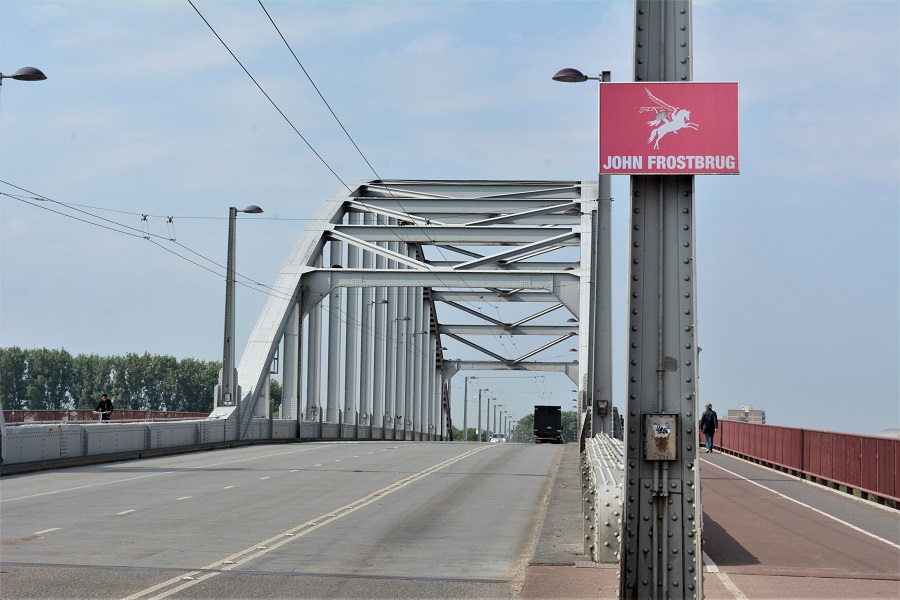
The bridge has been renamed the John Frost Bridge. Major-General John Frost was the commander of the troops that managed to reach the bridge.
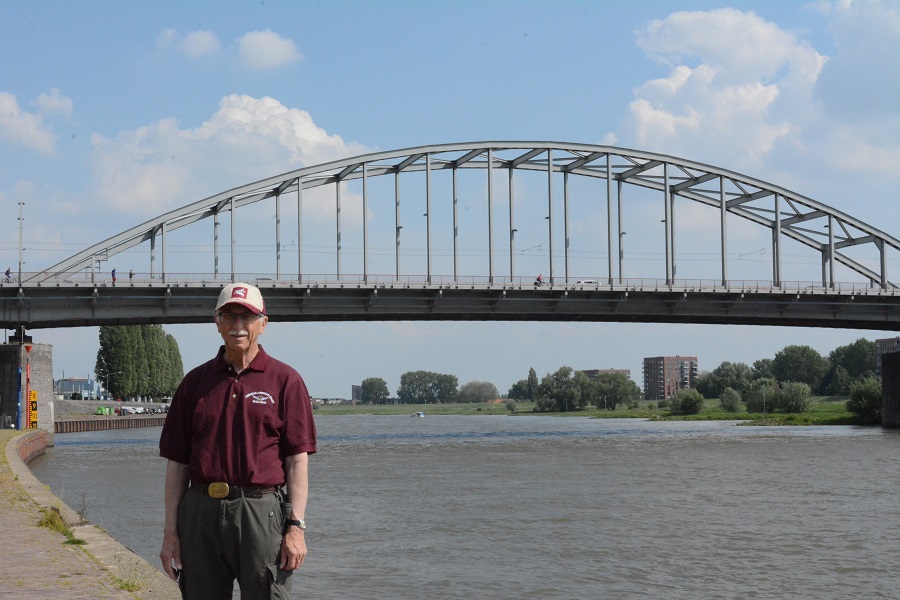
Airborne at the Bridge
There is a museum near the bridge called “Airborne at the Bridge”. It is a small branch of the Airborne Museum at Oosterbeek, but you might as well check it out as you will be there to see the bridge anyway,
Tip: If you plan on going to the Airborne Museum at Oosterbeek (see below), buy your tickets here. They are one euro cheaper here than in Oosterbeek.
The Airborne Circle
In Arnhem, there is a traffic circle dedicated to the Airborne. It is below street level and used by bicycles and pedestrians to cross the busy highway above.
Airborne Museum Oosterbeek
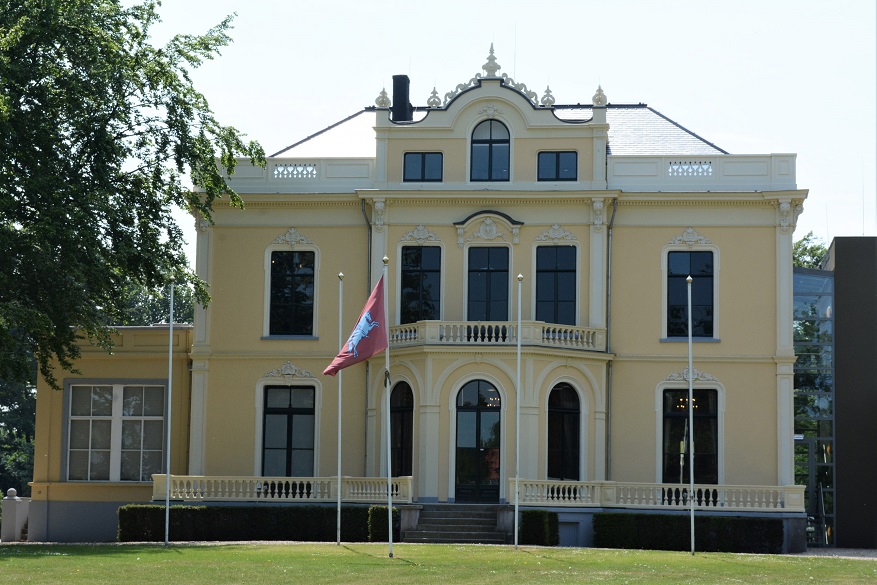
What was formerly the Hartenstein Hotel in Oosterbeek is now the Airborne Museum and Restaurant.
The museum depicts the Battle for the Bridge at Arnhem. In addition, there is an area called the “Airborne Experience”, which features half-destroyed buildings and rubble to simulate the experience of being in Arnhem during the battle. There are many artefacts in other parts of the museum, including uniforms and weapons (click the first photo to enlarge and scroll through them).
Airborne Monuments
Near the Airborne Museum at Oosterbeek, three monuments are dedicated to Operation Market Garden.
To the People of Gelderland
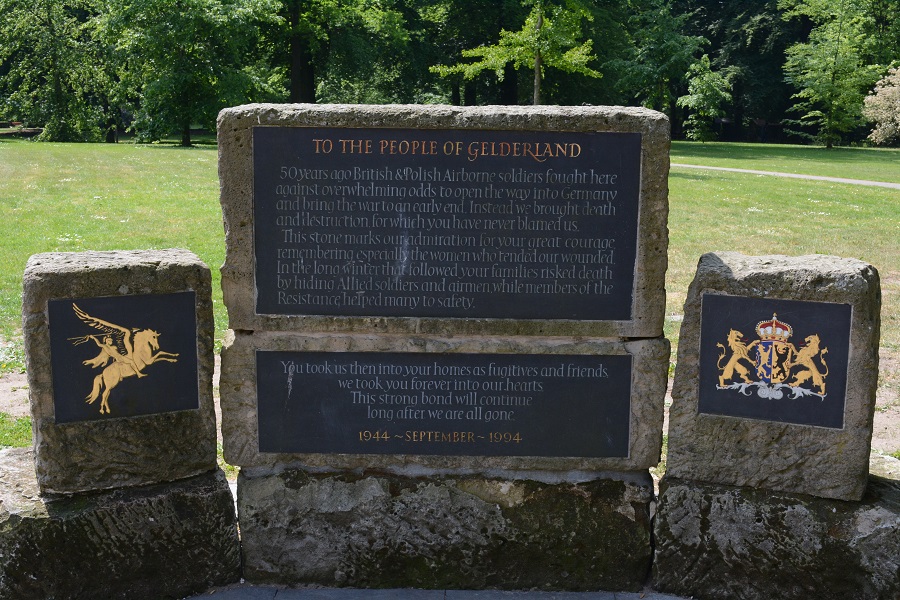
The first monument is located in the garden behind the museum. It is dedicated to the people of Gelderland. (Gelderland is one of the 12 provinces of the Netherlands).
The inscription on the monument reads, “To the People of Gelderland. Fifty years ago, British and Polish Airborne soldiers fought here against overwhelming odds to open the way into Germany and bring the war to an early end. Instead, we brought death and destruction for which you have never blamed us.
This stone marks our admiration for your great courage in remembering, especially the women who tended our wounded. In the long winter that followed, your families risked death by hiding Allied soldiers and airmen while members of the resistance helped many to safety.
You took us into your homes as fugitives and friends, we took you forever into our hearts. This strong bond will continue long after we are all gone. 1944 September 1994.”
Paratrooper and child
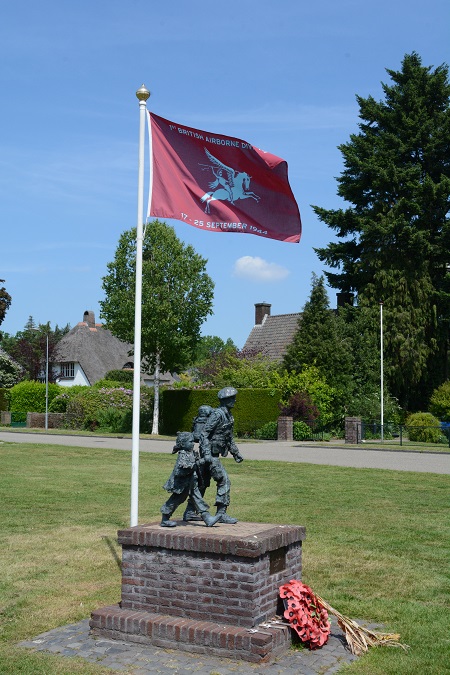
Across the street from the museum is a statue of a paratrooper under an Airborne flag, leading a child by the hand.
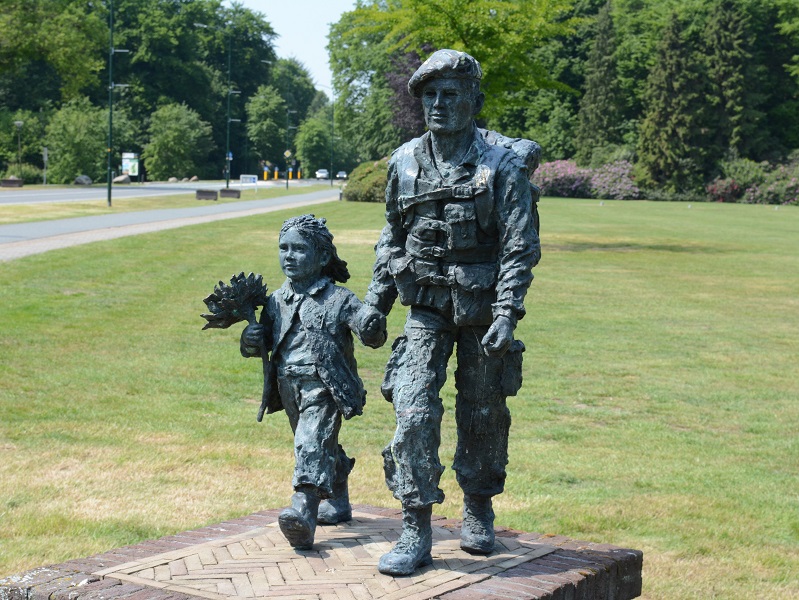
The Airborne Monument
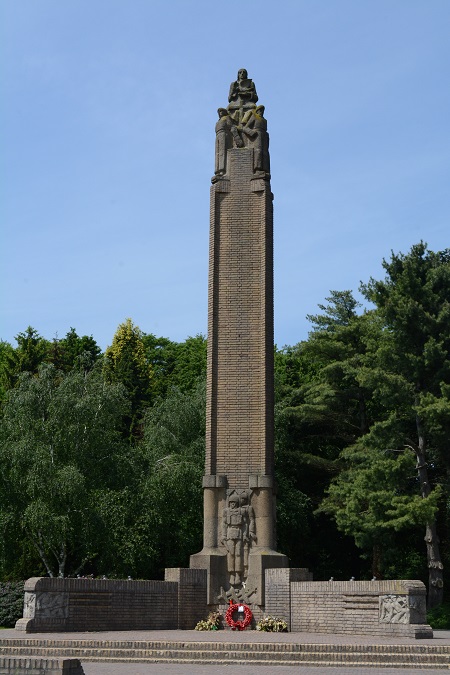
In the same field as the above statue is the Airborne Monument.
To get to Oosterbeek from Arnhem, take bus number one from the city centre. It does not go all the way to the museum, so you have to walk the last few blocks. Ask the driver to let you off at the closest stop to the Airborne Museum before the bus turns off.
The Airborne Cemetery
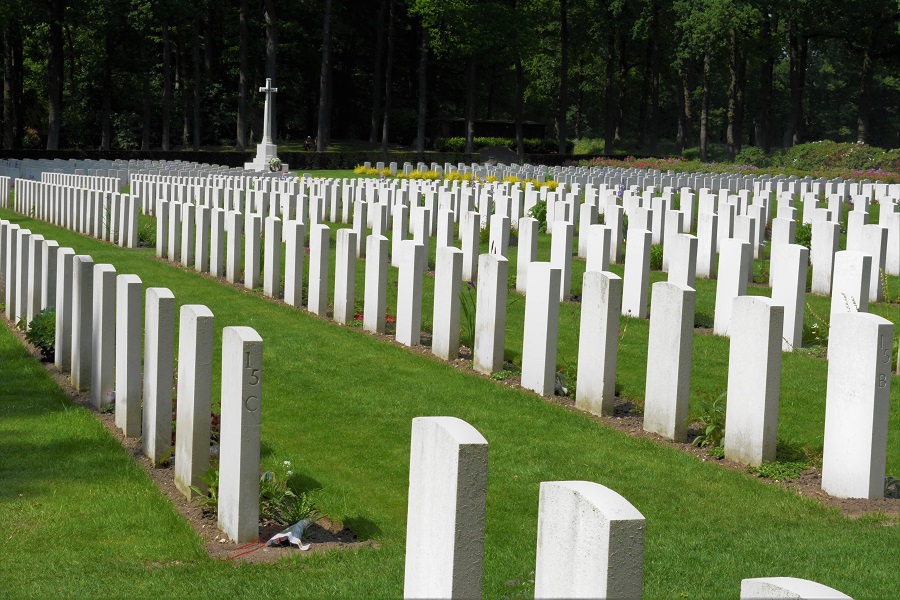
The Airborne Cemetery, more appropriately known as the Arnhem-Oosterbeek War Cemetery, is the resting place for those killed around Arnhem and Oosterbeek during Operation Market Garden.

Although no Canadian units were involved in Operation Market Garden, many Canadian paratroopers jumped with British Units. You can find several of them in the Oosterbeek Airborne Cemetery.
As the tombstones above testify, Market Garden involved thousands of paratroopers from several British Commonwealth countries and Poland. Above are the graves of a glider pilot, a member of the British Parachute Regiment, a member of the Polish Parachute Brigade, members of the Canadian and New Zealand Air Forces and a grave of a member of the British Airborne Signals Corps. (click the first photo to enlarge and then scroll to the others).
Directions
You can walk from the Airborne Museum to the Airborne Cemetery. Head back the way you came and watch for the signs. Turn left.
After visiting the cemetery, you do not need to walk back to the main street in Oosterbeek. Instead, walk from the cemetery to the first main road, turn left and cross the bridge. There you can get bus #1 back to Arnhem.
An excellent movie that portrays the events of Operation Market Garden is “A Bridge Too Far”. (except that it says the events took place in Holland. Holland is only a part of the Netherlands, not the whole country. The province around Arnhem is called Gelderland.)
